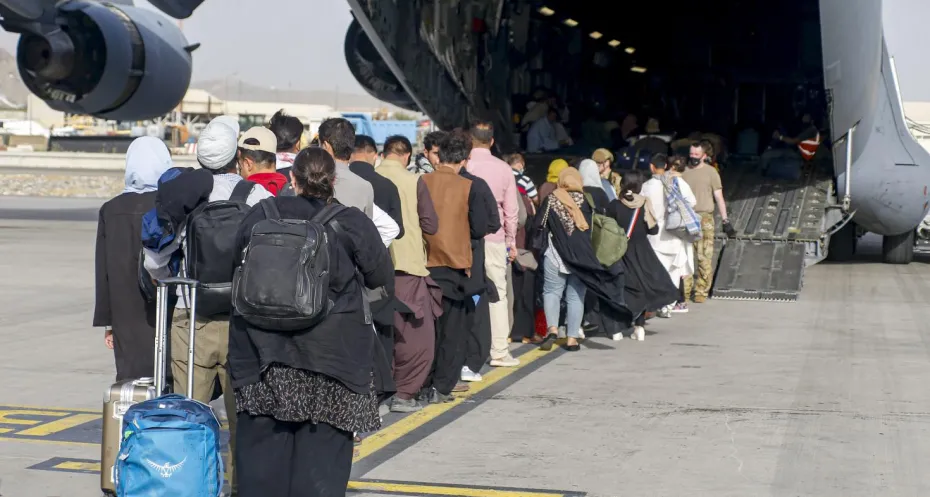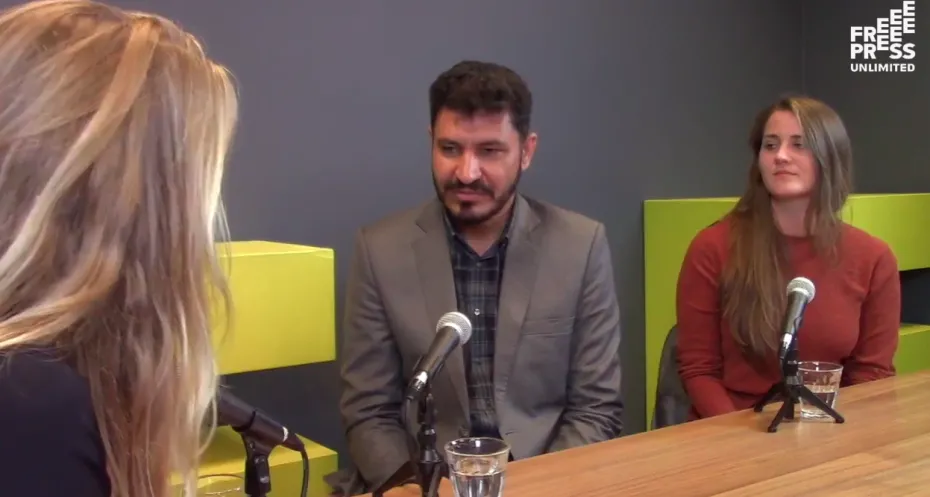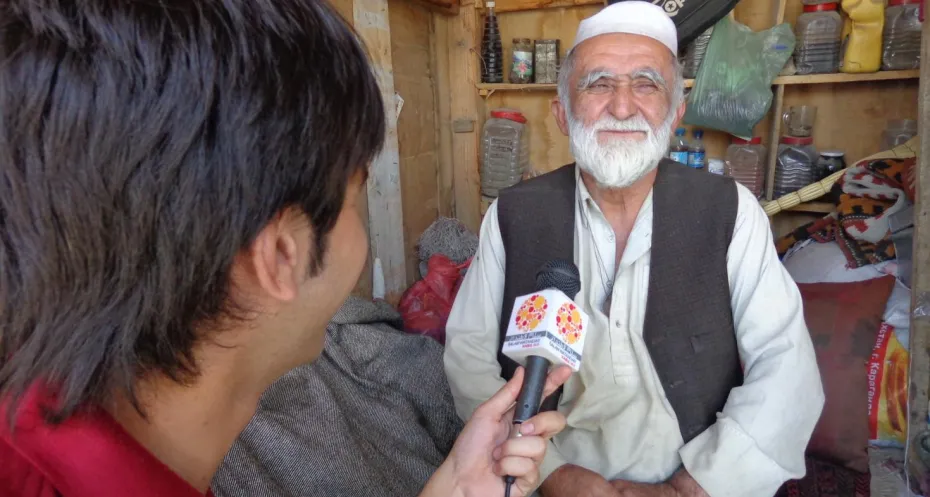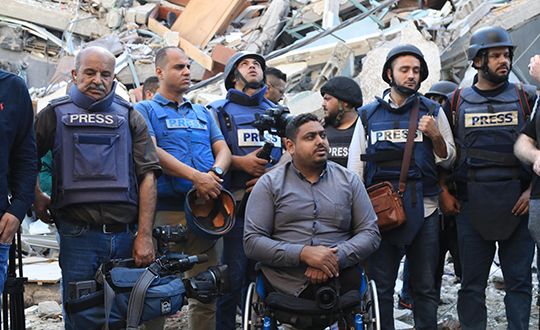Censorship, oppression and fear: the Afghan media landscape three weeks after the fall of Kabul
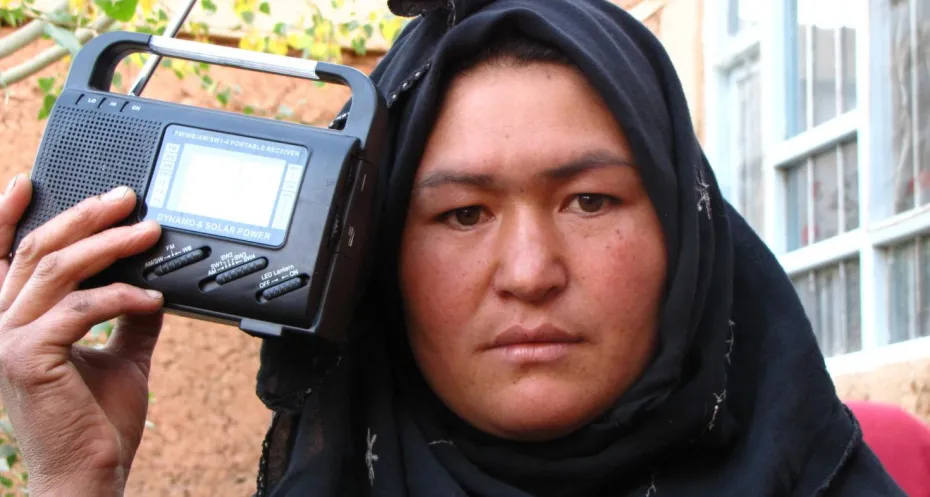
For the past 20 years, there has been relative freedom for media in Afghanistan. This has been replaced by censorship in the form of accommodating to the wishes and orders of the Taliban. There are many threats against media, and reports of harassment and pursuit. We have serious concerns about the safety of journalists in Afghanistan, and the lack of provision of information about what is happening on the ground.
While we don't have a complete picture due the lack of information and situation on the ground, especially outside Kabul, everything indicates that journalists, fixers and other media personnel who have worked for Western countries are at extreme risk. Early on we already received notice of blacklists circulating. In addition, we fear that female journalists, prominent journalists and journalists from minority groups, such as the Shia Hazara minority, are at additional risk. They send us the most concrete threats and stories of pursuit. Nevertheless, it seems that some of the media are still operational, but with less capacity and independence.
Fear and insecurity predominate
We received hundreds of requests for emergency aid from Afghan journalists who have not been able to flee the country. This shows that there is a lot of panic and fear among them. There are terrible stories among the applications.
We receive several reports that the homes of journalists are being searched by the Taliban. Prominent journalists are under threat and are moving from place to place to stay safe. Some journalists were unable to escape and were attacked. For example, a journalist reporting on the Taliban takeover in a northern province was sought out and shot at. He managed to escape, but still receives daily phone calls saying 'We will find you'.
Sometimes relatives are attacked if the journalists concerned are not found. We hear, for example, that the Taliban supposedly take children and torture them in order to put pressure on families and to tell them where journalists are hiding. An example that has already emerged through international media was the Taliban's search for a Deutsche Welle journalist, who is in Germany, where a family member was killed and another injured. The rest of the family members managed to escape at the last minute and go into hiding.
We also receive many reports that female journalists are at greater risk. Two female presenters of Radio Television Afghanistan have been ordered by the Taliban to stay at home and were replaced by male colleagues. The Afghan female journalist who became world news for interviewing a Taliban leader on television for the first time since the fall of Kabul, has now left the country out of fear.
Among the media that are still active, there is uncertainty about the Taliban's dealings with media. Several journalists have already been mistreated on the street. A journalist who had a personal letter of consent from Taliban spokesman Zabihullah Mujahid, stated that he was still being detained at the Kabul airport by the Badr Brigade 333, who said that this permission did not apply in the area where they operate. Many media outlets remain silent in anticipation of the Taliban's media directives that are expected any moment.
A relatively strong media landscape
Afghanistan has had a relatively strong media landscape over the past 20 years, but the Taliban are increasing the pressure with rules such as respecting Islamic regulations in reporting, and substantive control over what can and cannot be reported.
In the country there is roughly a division between bigger and smaller media. The bigger media have major investors and operate in the urban areas such as Pajwok, Tolo TV, Shamshad TV and Lemar TV. At the moment they see no other option but to remain active within the frameworks that the Taliban has set up for now. Many of the well-known journalists of these media have already left the country. The smaller media are active in the rural areas, of which the 350 FM radio stations in particular are very important for the provision of news to the local population. These are still active, but it is unclear for how long as they are largely dependent on foreign donors. Investments in these local media will therefore be crucial.
What is needed
Due to the censorship and the outflow of critical voices, there is currently little reliable information available. It is crucial that this is taken into account in the humanitarian response that is now being developed. This information is crucial for understanding how people are doing across the country and for giving them a voice in shaping a new future for Afghanistan.
Investment in local media is incredibly important, as well as short-term investment that ensures safe spaces are available for journalists who are threatened or persecuted.
In close cooperation with the Dutch Ministry and a network of involved journalists, we were ultimately able to bring 27 journalists and their families (97 people in total) to safety, 79 of whom arrived in the Netherlands. They would like to continue their work. We remain in contact with them to see how we can help them further. Unfortunately, we were unable to evacuate five Afghan journalists from our list, compiled with Dutch media and journalists, mostly because they were unable to reach the airport. We trust that the Ministry will do everything in its power to ensure that these people are also brought to safety. Of course, we are also staying in touch with journalists and media workers who have stayed behind, and are working to keep them safe.
